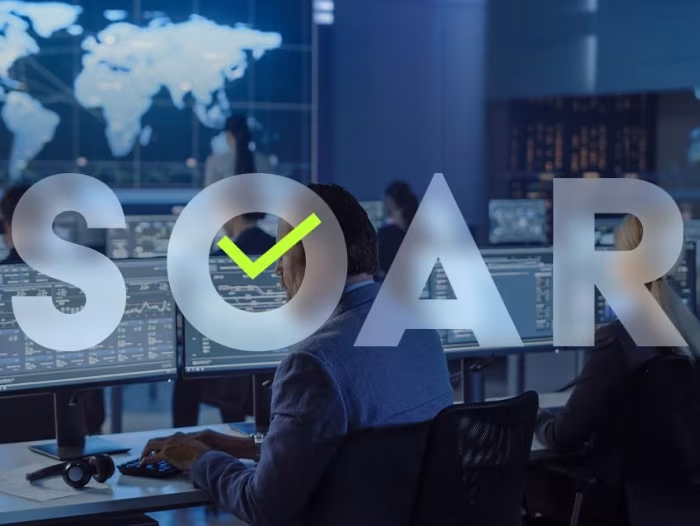Resource / Online Journal
SOC 2.0: Why Every SOC Needs SOAR to Survive the Next Cyber Wave?
Traditional SOCs alone are struggling. Thus, SOC 2.0, powered by SOAR, offers the automation, intelligence, and orchestration that can easily close the gap.
Published on Jun 12, 2025

Introduction – Security Operation Centre at a Crossroads
In threat detection, it is observed that Security Operations Centers (SOCs) are constantly bombarded with alerts. Many SOC teams are stretched thin, overwhelmed by false positives, and struggling to respond to incidents quickly and effectively.
On the other hand, SOC 2.0 is a new vision for security operations built on automation, integration, and intelligence. This security measure brings SOAR (Security Orchestration, Automation, and Response). This article will explore why SOAR is the engine SOCs need. It helps SOC to stay resilient, agile, and effective against today’s cyber threats.
Alert Fatigue of a Traditional SOC
Most SOCs today operate under tremendous pressure and analysts deal with a staggering volume of alerts. For example, with tools like SIEMs, firewalls, EDR, IAM, and more. With limited automation, triage is often manual, time-consuming, and prone to human error.
The result is nothing but real threats getting gulped in noise, and valuable time is lost. This leads to alert fatigue and missed or delayed responses to real cyber attacks.
Thus, allowing threat actors to entrench themselves in networks and exfiltrate sensitive data. As cyber threats evolve, the slower the response, the greater the risk. The traditional SOC model wasn’t built for this level of complexity. Something has to change to protect sensitive data of yours.
What is SOC 2.0, and does it help in enhancing security?
SOC 2.0 represents the next generation of security operations. It is a proactive, workflow automation, and intelligence-driven approach. This robust security measure transforms how security teams detect, respond to, and recover from threats.
Unlike the reactive cybersecurity strategy of SOCs, SOC 2.0 emphasizes continuous visibility, smart alert correlation, and rapid incident response. It shifts the focus to strategic data security.
By combining cybersecurity automation and human oversight, SOC 2.0 allows teams to handle threats at scale without sacrificing precision. Key enablers of SOC 2.0 include artificial intelligence tools, automation, and orchestration. And this is precisely where SOAR enters the equation.
SOAR: The engine behind SOC 2.0 to handle cyber threats
SOAR platforms serve as the connective tissue for modern SOCs. They bring AI tools and data sources together. Thus, creating a unified workflow that automates repetitive tasks and orchestrates complex response actions.
For example, with SOAR, instead of a human analyst spending an hour reviewing logs, tracing emails, and manually blacklisting URLs, the system triages and resolves the incident automatically in seconds.
It pulls threat intel, isolates endpoints, updates access rules, and alerts relevant stakeholders. The benefits are tangible:
- Faster response times
- Reduced analyst fatigue and errors
- Improved consistency across incidents
- Increased overall security maturity
Most importantly, SOAR doesn’t replace human analysts but rather empowers them. With mundane tasks automated, analysts can focus on high-value investigations, strategic planning, and proactive threat hunting or deal with any critical vulnerabilities.
What to Look for in a SOAR Solution?
Not all SOAR platforms are created equal. To truly support a SOC 2.0 evolution, your SOAR solution should offer seamless integration with your existing tools. For example, with SIEM, endpoint security, IAM, threat intelligence, and more.
Customizable playbooks also become a must. Your workflows should reflect your organization’s unique policies, risk tolerance, and operational needs.
For example, you can look for features like
- Real-time dashboards and case management
- Scalable architecture to grow with your SOC
- Strong audit trails and compliance reporting
How Can TechDemocracy Help Build a SOAR-Driven SOC?
At TechDemocracy, we understand that SOC transformation isn’t just about installing another tool; it’s about reshaping your cybersecurity culture. We can work with your existing ecosystem to unify data, standardize response playbooks, and automate incident handling without disrupting your operations. Ready to modernize your SOC? Let’s talk about how SOC 2.0 can work for your organization.
Conclusion
Cyber threats won’t wait for anything in this cybersecurity landscape. As attacks grow in scale with significant challenges, SOCs stuck in outdated models risk falling dangerously behind.
SOC 2.0 and SOAR are the bridge that connects today’s challenges with tomorrow’s capabilities. For anyone serious about digital assets, cyber hygiene, resilience, agility, and effectiveness, the time to evolve is now.
Recommended articles


How SOAR Automates Threat Response in Minutes (Not Hours)
Take Your Identity Strategy
to the Next Level
Strengthen your organization's digital identity for a secure and worry-free tomorrow. Kickstart the journey with a complimentary consultation to explore personalized solutions.